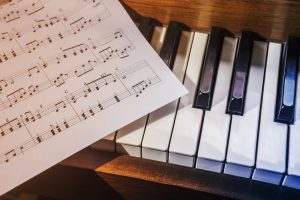Table of Contents
Shostakovich Waltz No. 2 (Suite for Variety Orchestra) Piano Solo sheet music, Noten, spartiti 楽譜
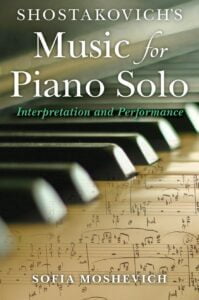
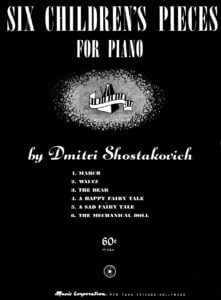
Best Sheet Music download from our Library.
Shostakovich Waltz No. 2
Waltz No. 2 from Suite No. 1 for Variety Orchestra
The “variety” in the orchestration comes from the inclusion of instruments associated with a dance band—four saxophones, guitar, and accordion, creating a casual, circus-like atmosphere.
Composition and premiere: Shostakovich originally composed what has become known as the Waltz No. 2 in 1955-56 for his score (Op. 99) for the film The First Echelon (Pervyi eshelon), directed by Mikhail Kalatozov, which had its premiere on April 29, 1956. The waltz was also included in the Suite from The First Echelon (Op. 99a) arranged by Shostakovich and Levon Atovmyan in 1956. The BSO has never performed the Waltz No. 2, but Keith Lockhart led a Boston Pops performance of the waltz in a program celebrating the Ballet Russes in May 2009.
In the late 1950s an anonymous person, probably Shostakovich himself, arranged an orchestral suite from ballet, musical theater, and film music of the 1930s to 1950s, that was mistakenly identified for many years as the Suite for Jazz Orchestra, No. 2; it is now known correctly as the Suite for Variety Orchestra. Waltz No. 2 is the seventh of eight numbers in the Suite for Variety Orchestra.
Between 1929 and 1970, Dmitri Shostakovich wrote scores for almost forty films in a variety of genres, from the eccentric silent feature The New Babylon, to hardcore Stalinist propaganda docudramas like The Fall of Berlin, to probing versions of William Shakespeare’s Hamlet and King Lear. The First Echelon (Pervyi eshelon) was Shostakovich’s only collaboration with Mikhail Kalatozov (1903-1973), a distinguished auteur director best known for his classic World War II film The Cranes Are Flying (1957).
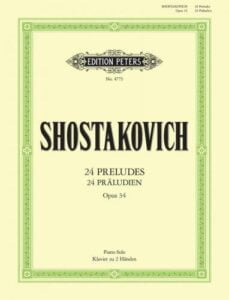
Please, subscribe to our Library.
If you are already a subscriber, please, check our NEW SCORES’ page every month for new sheet music. THANK YOU!
The scenario follows a group of enthusiastic young volunteers who travel to barren, remote Kazakhstan to participate in the campaign launched by Soviet leader Nikita Khrushchev for the settlement and agricultural development of the “virgin lands.” Shot by acclaimed cinematographer Sergei Urusevsky, the film depicts their difficulties in adjusting to the harsh climate and primitive living conditions, but in good Socialist Realist fashion focuses on the ability of Communist Party officials to lead the collective and triumph over adversity and human weaknesses (alcoholism, jealousy, romantic misadventures).
Shostakovich’s score includes a cheerful overture, several diegetic (that is, performed within the film’s narrative) “mass” songs, fanfares, and two brief sequences set to the music of Waltz No. 2 playing from a loudspeaker. The first occurs in the opening minutes as the arriving volunteers dance in a blizzard. Its reprise occurs during a summertime celebration of the completion of the first permanent dwellings. The full version included in the First Echelon Suite, Op. 99a, is the source for Waltz No. 2 in the Suite for Variety Orchestra.
The “variety” in the orchestration comes from the inclusion of instruments associated with a dance band—four saxophones, guitar, and accordion, creating a casual, circus-like atmosphere. Following traditional ABA waltz form, the outer sections are primarily in C minor and the middle section (in two short episodes) in E-flat major and A-flat major. A sense of unsteadiness results from the subtle shifting between these related tonalities, as does the contrast between the light, suave, irresistible main theme (with prominent quarter note rests in the last phrase) and the underlying darkness of the surrounding accompaniment. An ironic “oom-pah-pah” beat pulses in the double basses and snare drum. The alto saxophone announces the simple, melancholy theme at the outset, later handed off to crooning trombones.
For the broad public, the unassuming, slightly lascivious little Waltz No. 2 has become one of Shostakovich’s most recognizable (and most frequently rearranged) compositions. Its fame soared when Stanley Kubrick used it to brilliant effect during the opening moments of his last film, Eyes Wide Shut (1999), an erotic psychological mystery drama starring Tom Cruise and Nicole Kidman.
Come join us now, and enjoy playing your beloved music and browse through great scores of every level and styles!
Can’t find the songbook you’re looking for? Please, email us at: sheetmusiclibrarypdf@gmail.com We’d like to help you!
The Suite for Variety Orchestra, No. 1
The Suite for Variety Orchestra No. 1 (Russian: Сюита для эстрадного оркестра № 1, romanized: Syuita dlya estradnogo orkestra nomer 1) is a suite in eight movements arranged by Levon Atovmyan after 1956, based on music by Dmitri Shostakovich.
An editorial error in the tenth volume of the Shostakovich collected works edition published by Muzyka in 1984 resulted in the Suite for Variety Orchestra No. 1 being misidentified as the “Suite for Jazz Orchestra No. 2” or “Jazz Suite No. 2”. The score was first published with the correct name in 2001.
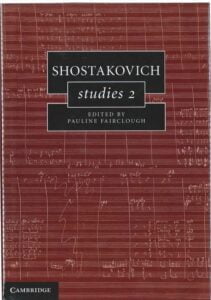
Atovmyan, who arranged and assembled the suite, was a close friend of Shostakovich, and was regularly tasked with arranging concert suites of his film music. He also made numerous other transcriptions and arrangements, often without the composer’s involvement and only his tacit approval. The Suite for Variety Orchestra No. 1 includes arrangements of excerpts from Shostakovich’s ballet, theater, and film music. It has not been precisely dated, but is believed to have been composed after 1956.
The first documented performance took place on December 1, 1988, at the Barbican Hall, played by the London Symphony Orchestra conducted by Mstislav Rostropovich. The Royal Concertgebouw Orchestra conducted by Riccardo Chailly made a successful recording of the suite in 1991. In 1994, André Rieu released a recording of the suite’s “Waltz II” that broke into the top 5 of the Dutch Mega Top 50 and sold over 50,000 copies. It was later included in the soundtrack to Stanley Kubrick’s Eyes Wide Shut.

This suite is often confused with the Jazz Orchestra Suite No. 2, which is a suite composed of Dmitri Shostakovich in 1938 for the newly founded state jazz orchestra of Victor Knushevitsky, and released on November 28, 1938 on the radio from Moscow for the same orchestra. The original score was lost during World War II, but a piano version was rediscovered in 1999 by Manashir Yakubov. The three movements of the suite were subsequently rebuilt and orchestrated by Gerard McBurney, and released in the BBC proms of the year 2000.
Browse in the Library:
Or browse in the categories menus & download the Library Catalog PDF:
